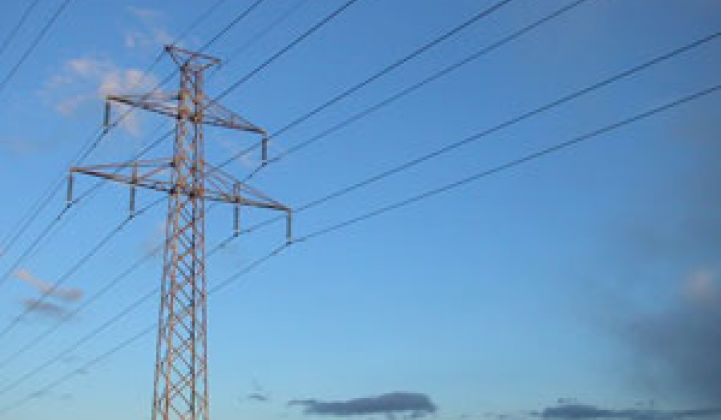When it comes to the economic possibilities and financial upside of the smart grid, I take comfort in several key data points, because they help us better understand this very complicated infrastructure endeavor.
The first number that encourages me is $4.5 billion, the amount that President Obama's stimulus bill allocates for the modernization and digitalization of the nation's electricity system.
One of the key reasons for the government's support, of course, is the smart grid's job creation impact and potential.
A recent study from IBM indicates that this infrastructure transformation could generate nearly 500,000 jobs with a $10 billion investment. I believe that's a conservative number, because smart grid upgrades will launch new companies and new industries for at least a generation, providing the beleaguered economy with both a kick-start and an ongoing super Keynesian jolt. Think about the Internet Revolution on steroids, and that's what the smart grid represents.
Providing Work for Legions of People and Companies
One measure of the smart grid opportunity can be seen in this simple statistical set: there are 142 million electricity meters in the United States, but only 5 percent of them are smart. Converting each of these meters is very much akin to retrofitting all the old buildings across the nation – it will provide work for legions of people and companies, and deliver economic stimulus, for years to come.
But smart grid infrastructure improvements will result in much more than a new generation of smart meters, and that's the first reason I believe this technology transition will help the economy find its way back to prosperity. If we upgrade properly, the smarter grid will enable hybrid cars as well as solar and wind power to flourish on a broad and truly meaningful scale.
The second reason I think smart grid improvements will bolster the economy as a whole has to do with the fact that tens of thousands of applications and services - many we haven't even thought of - will follow in the wake of the first injection of electricity infrastructure stimulus. Once again, a good analogy here is the Internet; a decade ago, for example, we had no idea how many Web-based tools would ultimately be developed for online commerce. And no idea what companies would develop. At the beginning of the Internet Revolution, there was no Google. Or Amazon. Or Facebook.
Silicon Valley's Smart Moves
Silicon Valley knew then, and knows now. And that's the third reason. And also why traditional high-tech players like Google, Microsoft, Cisco and IBM are currently charging into the smart grid marketplace along with stalwarts such as General Electric. This kind of corporate interest and momentum tells me that smart grid investments from the private sector will be broad and deep, and this can't help but boost the sagging economy.
The Energy Department is still trying to determine how the smart grid stimulus funding will be doled out. Most analysts believe the money will be funneled to electric utilities rather than technology developers, so Silicon Valley players are moving quickly to secure long-term partnerships with power distributors. IBM is already providing smart meter technology to CenterPoint Energy, a Houston-based utility that is planning to deploy 2.4 million meters using IBM software over the next five years.
Setting Utilities Free
This brings me to the fourth reason I see the smart grid as an economic driver. After years of pretty backward and balkanized regulatory thinking, this infrastructure effort will finally help utilities become part of the solution rather than part of the problem. How? With new rules that will reward efficient and forward-thinking power distributors for selling less energy rather than more, and with new structures that will foster competition and allow the best-run utilities to diversify and enter new energy-related markets.
The fifth reason smart grid enhancements will enrich our economic prospects centers around consumers, who will play a significant role in this process when demand response technologies are deployed. These cutting-edge digital solutions will help end users customize and conserve their energy consumption to free up cash for other spending.
Public-Private Partnerships
My recent meetings in Washington DC several weeks ago convinced me that the smart grid can have a powerful economic impact from coast to coast because of the tight alignment and authentic partnership between the public and private sectors. This is reason six. When you hear the commitment and see the consensus emanating from lawmakers, regulators, executives and entrepreneurs, you know that something big is going to happen in this area. The same kind of vast public-private alliance helped spawn NASA and the expansion of the aerospace industry in the 1960s.
The economy is floundering right now, and there's very little cause for optimism anywhere. With that in mind, it's fairly dangerous to pin our hopes for recovery on any one sector. But I believe that smart grid infrastructure upgrades, along with green building, represent the future of the post-petroleum era. It will be interesting to watch how both new markets make their way in the coming decades.
Michael Butler is Chairman and CEO of Seattle-based Cascadia Capital, LLC, a national investment banking firm that is financing the future for a wide range of companies in sustainable industries
The above opinion piece is from an independent writer and is not connected with Greentech Media News. The views expressed here are those of the author and are not endorsed by Greentech Media.
